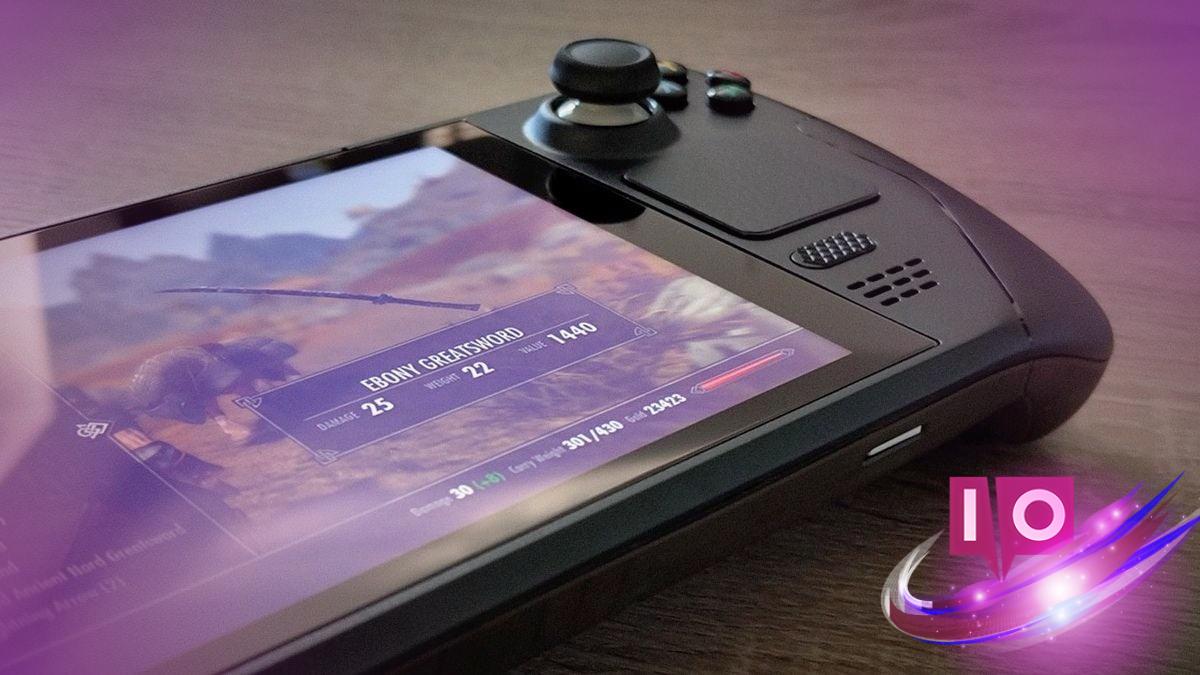The newest contender in the handheld gaming arena, the ROG Xbox Ally, has arrived with enticing price points of $600 for the base model and $999 for the “X” variant. As the battle for portable gaming supremacy heats up, it’s time to evaluate how this device stacks up against its leading rival, the Steam Deck.
The Steam Deck has established itself as the go-to choice for PC gamers on the move, benefiting from Valve’s commitment to innovation despite its modest performance at a competitive price. So, let’s dive into a head-to-head comparison of the ROG Xbox Ally and the Steam Deck, covering essential elements like hardware, software, gaming potential, and, of course, price-to-performance ratios.
Should You Choose the Steam Deck or the ROG Xbox Ally?
First off, we’ll break down the components of each handheld and analyze how they perform with games. We’ll use equivalent PC specs and dedicated benchmarks for the Steam Deck and ROG Ally to get a comprehensive view. Next, we’ll look at their operating systems, game libraries, and the potential they offer beyond out-of-the-box capabilities.
Finally, we’ll assess the prices for each device to determine whether investing in either of these handhelds is worthwhile.
The Components and Performance
Check out the comparison table below for a quick overview of each device’s specs, which are crucial in assessing their capabilities:
| ROG Xbox Ally ($599) | ROG Xbox Ally X ($999) | Steam Deck OLED 512GB ($549) |
|---|---|---|
| GPU: Integrated “Van Gogh” RDNA 2 GPU | GPU: Integrated “Strix Point” RDNA 3.5 GPU | GPU: Integrated RDNA 2 GPU |
| APU: AMD Ryzen Z2 A – 4 cores, 8 threads, up to 3.8GHz | APU: AMD Ryzen AI Z2 Extreme – 8 cores, 16 threads, up to 5GHz | APU: 6nm AMD ZEN 2 APU |
| RAM: 16GB LPDDR5X-6400 | RAM: 24GB LPDDR5X-8000 | RAM: 16GB LPDDR5-6400 |
| Storage: 512GB SSD with micro-SD card slot | Storage: 1TB SSD with micro-SD card slot | Storage: 512GB NVMe SSD with micro-SD card slot |
| OS: Windows 11 Home (exclusive “Xbox” variant) | OS: Windows 11 Home (exclusive “Xbox” variant) | OS: SteamOS (Linux-based) |
| Screen: 1080p 7″ IPS 120Hz | Screen: 1080p 7″ IPS 120Hz | Screen: 1280×800 7.4″ HDR OLED 90Hz |
The base ROG Xbox Ally and the Steam Deck OLED 512GB share many specs, making them closely competitive. Both offer 16GB of RAM and utilize AMD’s RDNA 2 GPU architecture. However, the ROG Xbox Ally boasts a more modern APU, the Ryzen Z2, while the Steam Deck lags behind with its Zen 2 architecture. The newer tech in the ROG Ally suggests it will perform better in future titles.
Regarding displays, the ROG offers a high-definition 1080p resolution at 120Hz, providing an exceptionally smooth gaming experience. Conversely, the Steam Deck’s lower 1280×800 resolution sacrifices visual fidelity for performance but still benefits from an HDR OLED screen.
Notably, the ROG Xbox Ally X stands out with more potent internals, featuring a top-tier RDNA 3.5 GPU and 24GB of RAM, positioning it well above its competitors. However, these enhancements may adversely impact battery life, where the Steam Deck tends to perform better with lower power consumption.
We anticipate that the ROG Xbox Ally’s superior components will often outperform the Steam Deck in most games, but differences may not be stark across the board. While the ROG Ally may cost more, it won’t always guarantee a significant leap in performance, given both share the RDNA 2 GPU core.
Operating Systems and Game Libraries

Both ROG Xbox Ally versions utilize a custom Xbox OS based on Windows 11 Home, designed to cut unnecessary processes and enhance battery performance. This OS is currently exclusive to the ROG devices but may be more widely available in the future.
The Steam Deck, in contrast, operates on Valve’s SteamOS, a customized version of Arch Linux tailored for gaming. This OS minimizes power consumption and operates efficiently, allowing for a smooth gaming experience with extensive Steam library support. However, users aiming to access non-Steam games may face challenges installing Windows or other applications.
The ROG Xbox Ally, on the other hand, runs any Windows application, providing flexibility for users to access a broader range of games and applications without hassle.
Steam users are somewhat limited to the Steam ecosystem, while the ROG Xbox Ally’s integrated Xbox app supports Game Pass natively, offering a more comprehensive library without the hassle of lagging streams.
This dual capability allows ROG users to enjoy both platforms with ease, giving a significant advantage in terms of gaming options.
Assessing the Costs and Value

The ROG Xbox Ally’s pricing starts at $599, while its advanced model reaches $999. The Steam Deck OLED is positioned at $549. Each offers unique features tailored for gamers on a budget or those wanting top-tier performance and flexibility.
While the base ROG Xbox Ally impresses at its price with comparable internals, the Ally X’s premium cost may not justify its additional specs for all gamers. If you’re a fan of Valve and prefer their ecosystem, the Steam Deck remains a solid choice, especially given its dedicated game performance enhancements and support.
Is the Steam Deck worth $549? It offers solid capabilities, but evaluating pricing against the newer ROG Xbox Ally could suggest that a slight price drop to $499 could make it more compelling. Right now, the base ROG Xbox Ally holds more allure for users seeking versatility.
Whichever handheld you lean toward, make sure to explore all your options like Moyens I/O for even more insights and reviews to help you make the best decision!
